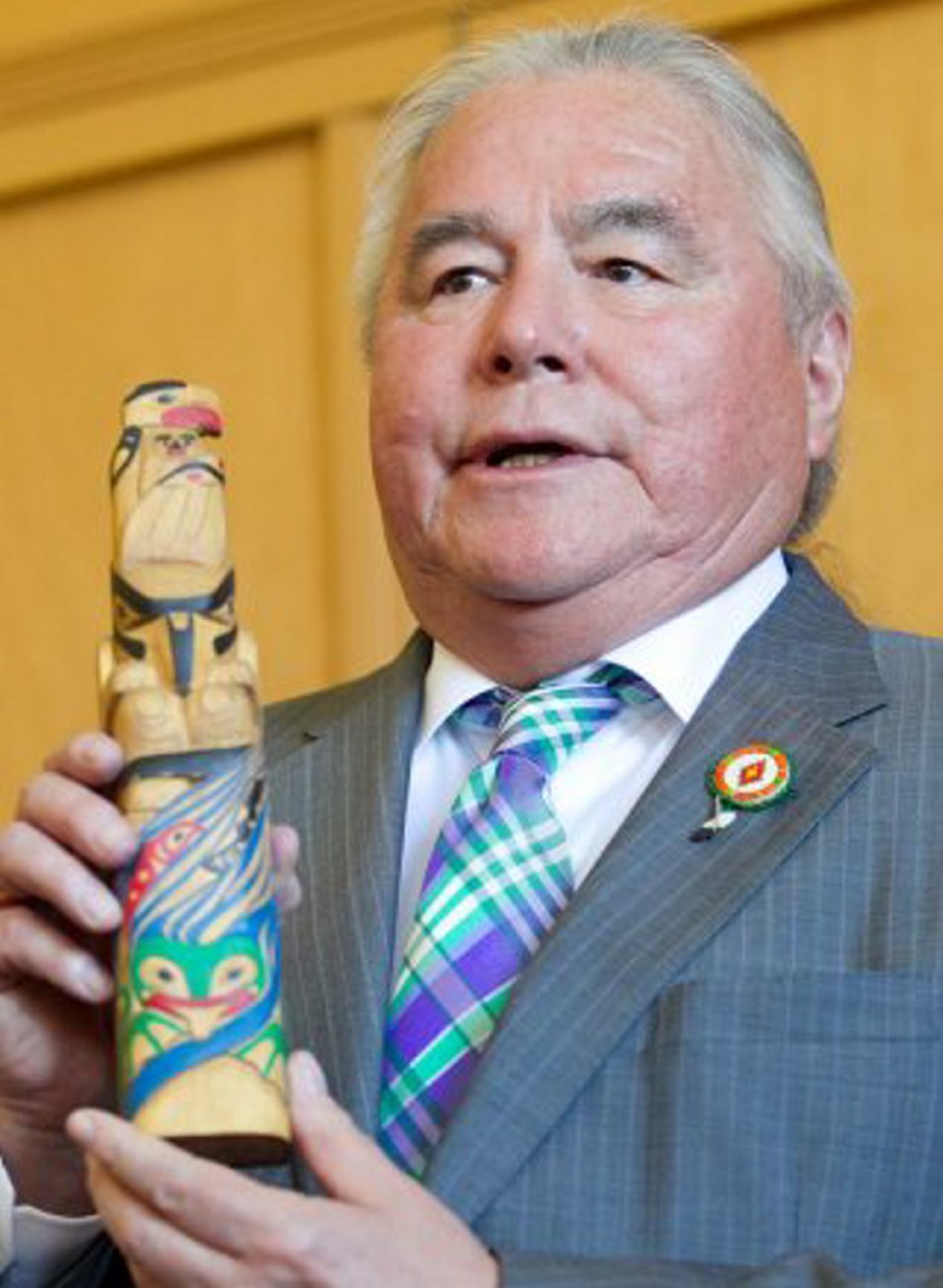A block of raw cedar can be picked up for a few dollars, but once carved and painted by skilled First Nations artists, it can sell for $2,000 — an increase in value that will help fund programs for Greater Victoria’s off-reserve aboriginal population.
Victoria Native Friendship Centre is one of three organizations awarded $15,000 each by the provincial and federal governments to develop innovative ideas that will improve the economic outlook for First Nations people living off reserve.
“This is about creating an opportunity for our young artists who participate in developing these pieces of art to generate revenue to help in our community,” said Bruce Parisian, Native Friendship Centre executive director, as he displayed a carving by artist Carey Newman.
The centre was one of 21 groups that submitted ideas to the Aboriginal Social Innovation Competition. The $15,000 will be used to buy materials for young artists, who will be paid a small honorarium and then donate finished pieces to the centre for auction or sale.
The proceeds will be divided among the Friendship Centre, community organizations and charities.
The funding will help build recognition for artists and emphasize the value of First Nations artwork, Parisian said.
Paul Lacerte, B.C. Association of Aboriginal Friendship Centres executive director, which helped organize the competition as part of the provincial Off-Reserve Aboriginal Action Plan, said aboriginal art is already gaining in value and the extra funding will help.
“The days of a woman spending 30 hours on a pair of moccasins and than having someone offer $20 are over,” he said.
The competition brought out numerous interesting ideas, Lacerte said.
“This competition was really about finding out the groovy things that are happening in the communities around British Columbia and honouring that and recognizing that that’s where the solutions are,” he said.
The four criteria were innovation, social improvement, sustainability and aboriginal community ownership.
The other winners are:
• Vancouver Native Health Society’s aboriginal instant kitchen, a cooking education program that will help urban First Nations learn about traditional food-gathering, cooking, nutrition, shopping and gardening.
• Penticton Peach Festival Aboriginal Cultural Village, which aims to address racism and lack of knowledge about aboriginal culture through a powwow and sale of traditional foods at the popular Peach Festival.
Aboriginal Relations Minister John Rustad said 74 per cent of B.C.’s First Nations population live off-reserve and 60 per cent of those live in urban areas.
The winning projects showcase social innovation, Rustad said.
“Each project is an important step forward toward improving the lives of aboriginal people living off-reserve, while creating stronger communities and new opportunities,” he said.



